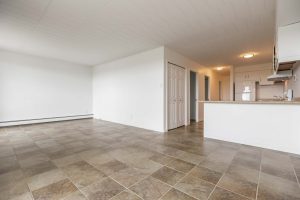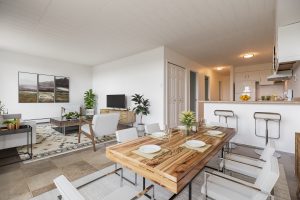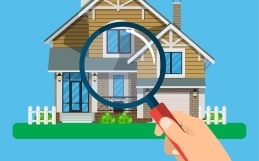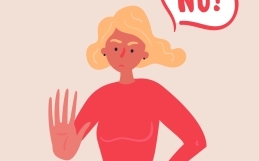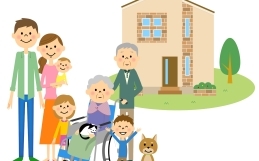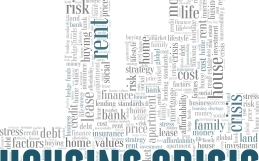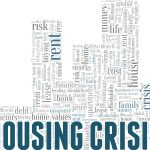 Virtual Staging has come a long way over the years. The first time I saw a listing that was Virtually Staged, I was pretty mortified. It looked terribly fake and all in all the effect was a mess. Times have changed.
Virtual Staging has come a long way over the years. The first time I saw a listing that was Virtually Staged, I was pretty mortified. It looked terribly fake and all in all the effect was a mess. Times have changed.
I list a lot of Guelph properties for sale, and I’m a big believer in the value of Home Staging. Even in a heated Seller’s market, I invest time and resources into Staging. It helps present a home at its best, without question. That said, there are times when it’s just not practical to bring in furniture, art, and decor – for a number of reasons. Cost can be an issue. Those of us with kids and pets are at a bit of a disadvantage, because many Stagers will (understandably) not place their goods in a home where there’s a high probability of damage or excessive wear and tear. Sometimes, there’s just such a rush to get to market, that finding a Stager and booking their time and furniture is problematic.
For whatever reason, when fully Staging a home isn’t an option, there’s still something better than doing nothing: Virtual Staging.
What is Virtual Staging?
Virtual Staging is a process of taking an image and enhancing it by way of placing elements in the photo that otherwise weren’t there. Images of a home are taken and then sent to someone who specializes in this design skill. That person adds any number of things to an image: furniture, art, decor, plants, and so forth. The goal is to make the space look Staged in the same way that it would be in “real life,” were that an option.
Another aspect of Virtual Staging can involve removing items from a space. Let’s say there is a ginormous aquarium on a wall that you’re worried makes the space look small. That can be removed during the process of Virtual Staging.
When Does Virtual Staging Make Sense?
For me, there are two scenarios when Virtual Staging makes the most sense.
First and foremost: vacant houses. It’s one thing for a house to be vacant and empty for showings; it’s another thing to post images of a vacant, empty house. The first isn’t ideal, but it’s often unavoidable. The second – posting images of a vacant property online – is to be avoided if at all possible.
An empty house never shows well from a marketing perspective. Outside of Buyers just not feeling warm and fuzzy about a property, roos feel smaller when they are empty – and every little imperfection jumps out. On top of this, Buyer assumptions can become problematic.
For example, a vacant home can be a sign that a property is distressed. A lot of people see an empty house and think the Sellers must be desperate. Their offers typically reflect that assumption.
Virtual Staging for Awkward Layouts
Secondly, Virtual Staging can be quite helpful in cases where a home’s layout is awkward, or where a room isn’t being used for its intended purpose. Haven’t we all, at some point, taken over a room and used it for something it wasn’t meant to be used for? I used the dining room at my first house in Guelph as an office for years. It just made more sense for me, considering how few dinner parties I was throwing! When the time came to sell, I knew it would confuse people, so I temporarily packed up my office and converted it back to a dining room for the duration of the sale.
This scenario comes up frequently. As a Seller, you might assume that a Buyer will walk in and see past something like this. They’ll be able to visualize the space for their own purposes, right? Not in my experience, I’d say maybe 20% of Buyers possess that ability – and that may be overly generous. Each room in a home should make immediate sense to a Buyer.
Upsides to Virtual Staging
One upside to Virtual Staging is that it can happen very quickly. Stagers book out, sometimes have limited inventory, and need to arrange for movers, helpers, and so forth. In a really rushed selling scenario, in-home Staging may be hard to pull off.
Virtual Staging is something that happens after photos are in hand. I’m sure different providers have different turnaround times, but generally I’ve received Virtual Staging photos back within a day.
Virtual Staging Dos and Don’ts
Like just about everything when it comes to real estate marketing, there are good ways and not-so-good ways to approach this strategy.
Virtual Staging is its own skill. The average photographer does not have this skill set, unless they’ve been specially trained. Do use someone that is experienced. I have seen some great examples of Virtual Staging techniques, but I’ve also seen some really bad ones. Quite frankly, the image quality should be good enough that it doesn’t scream ‘this home has been Virtually Staged.’
On the same note, do use a professional photographer to get the images that will serve as the basis for the Staged rooms. Working with high-quality, well-composed images is a must.
Don’t fail to disclose that an image has been altered. In some real estate boards (mine, for example,) it is a rule that any significant alterations to an image (including Virtual Staging) must be disclosed.
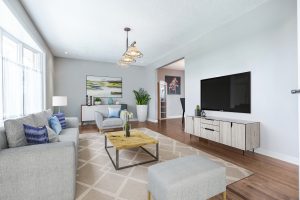
Through Virtual Staging, we were able to give Buyers a sense of what a more traditional living room layout would look like.
Do be prepared for pushback from Buyers. Some think Virtual Staging is great and find it really helps them visualize how to furnish a space, or ‘get past’ the existing decor, for example. Others arrive on site and experience what I call the lunchbag letdown. Some feel like they’ve been misled. You should be clear when posting a photo that it’s an interpretation not an accurate image. Transparency matters.
Don’t let your Realtor post a “virtually renovated” image on your listing. Honestly, that may not be a rule violation but I wonder if it should be. We are not contractors and adjusting for some furniture and decor is one thing – presenting an image of what a space could look like if renovated is, in my opinion, taking it a step too far.
Don’t abandon Staging entirely. Even if budget doesn’t permit you to bring in a house full of furniture, you can still add some nice touches with art and decor, greenery and flowers, etc.
Virtual Staging has come a long way. Is it an ideal scenario? Not really. But there are times when this strategy is one to consider.
